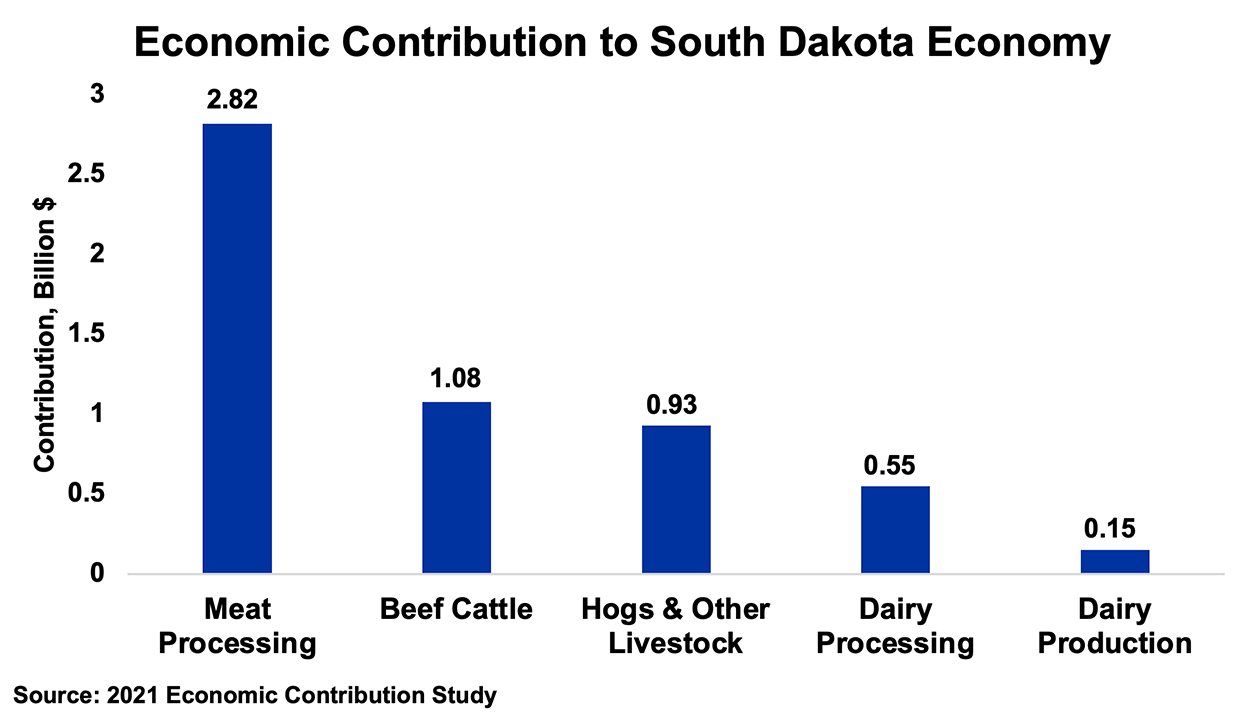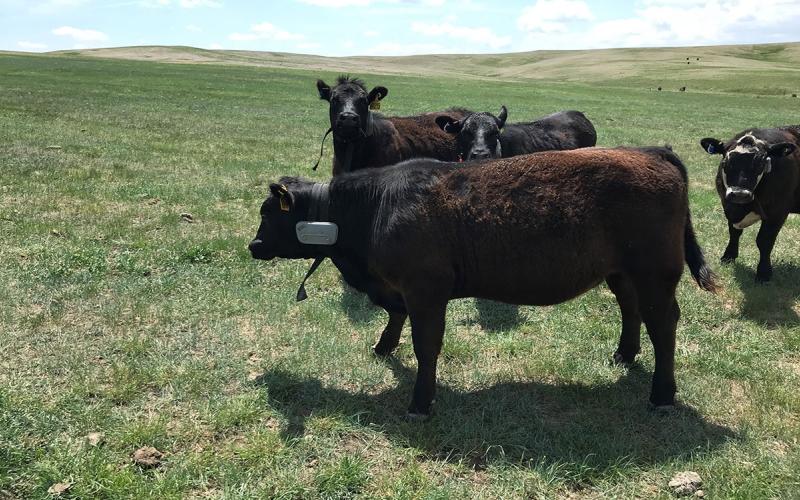Key Takeaways

- The South Dakota beef industry is one of the largest components of South Dakota agriculture. Agriculture is the largest single industry in South Dakota (11.7 billion dollars in total value added) with beef production providing 1.08 billion dollars.
- South Dakota ranks fifth in beef cow numbers and seventh in cattle on feed (2017 Census of Agriculture and USDA January 2022 Cattle Inventory Report).
- Cattle and calf sales represent the largest single source of cash receipts from agriculture in South Dakota.
- A key difference between the South Dakota beef industry and all other agriculture sectors is that the economic contributions from beef are spread across all areas of the state.
May is Beef Month, perfectly timed with beautiful weather to enjoy steaks or burgers on the grill. In South Dakota, the impact of the beef industry goes beyond enjoying a great meal. Beef cattle and enterprises supporting the industry are key components of the economy of South Dakota. So, in keeping with the theme of May Beef Month, let’s examine more closely how the beef industry affects South Dakota.
Determining Economic Impact
Information in this report was compiled from two primary sources: 2021 Economic Contribution Study of South Dakota Agriculture, Ethanol and Forestry and the 2017 Census of Agriculture. These reports are the most-recent and most-reliable estimates of the status of the South Dakota beef industry and the economic contribution to the South Dakota economy. These sources do not reflect the effect of drought conditions on current inventories, or the impact of current market volatility on profitability. However, these data sources are sufficiently accurate and timely enough to highlight the relative importance of beef production in the South Dakota economy.
The South Dakota Department of Agriculture sponsored the 2021 Economic Contribution Study, along with other partners, including representatives from the corn and dairy industries. A key difference between this and other economic impact studies is that this report measures the direct economic contribution (value of sales less input costs) of each individual sector. Economic contributions reflect changes in household income, which would include labor costs and self-employment income. Under this approach, the total of all industries equals what actually exists in the state, without the “double counting” that can occur using multipliers. Economic impact, on the other hand, measures the effect of adding or removing an entire industry or individual business. This approach may be useful in evaluating the effects of adding an additional ranch, feedlot, or other livestock operation, but may result in wildly overstating the impact of a particular industry if used incorrectly.
South Dakota Beef Industry National Rankings
South Dakota ranks fifth in the nation in number of beef cows (2017 Census of Agriculture, January 2022 Cattle Inventory report). Drought conditions have resulted in greater than normal culling and a reduction in beef cow inventories in the state (1.8 million in 2017 compared to 1.61 million at the end of 2021). However, the other major cow-calf states also reduced beef cow inventories (except for Oklahoma), resulting in no change in South Dakota’s ranking.
South Dakota is traditionally thought of as a cow-calf state, which reflects our rank in beef cow numbers. However, South Dakota also has a significant cattle feeding sector. According to the 2017 Census of Agriculture, South Dakota ranks seventh in cattle on feed (541,000 head). In contrast, South Dakota typically ranks tenth in the USDA monthly cattle on feed reports. The difference lies in which feedlots are surveyed for the two different reports. The Census of Agriculture surveys all agriculture production businesses in the state, while the monthly cattle on feed reports only surveys feedlots with more than 1,000 head capacity. That difference results in approximately half of the cattle on feed in South Dakota being uncounted in each monthly report.
Cash Receipt Contributions
According to the 2021 Economic Contributions report, cattle and calf sales represent the largest single source of cash receipts for South Dakota agriculture. In 2019, cattle and calves were the source of 2.1 billion dollars in sales, compared to 1.85 billion dollars for corn and 1.2 billion dollars for soybeans. Weather conditions and market prices can result in year-to-year variations, but in the years included in the 2021 Economic Contributions report, cattle sales were either first or second.
Economic Contribution
Agriculture contributes 21% (11.7 billion dollars) of the total added wealth to the South Dakota economy (2021 Economic Contribution Study). Half of that amount came from livestock. The contributions of individual livestock sectors are shown in Figure 1.
Meat processing is the largest single sector related to livestock production, with nearly three times the contribution compared to the next largest sector, beef production. Beef production contributes 1.08 billion dollars in added value to South Dakota, representing 9.2% of all agriculture. Contributions from other agricultural sectors are shown in Figure 2.


Geographical Distribution of the Beef Industry
The beef industry in South Dakota is unique compared to other ag sectors in that it is the most geographically dispersed across the state. Interactive maps found on South Dakota Department of Agriculture and Natural Resources website clearly show the differences in geographical concentration for each sector. Crop production is concentrated in eastern South Dakota, where greater rainfall supports increased crop revenue per acre. The dairy sector is even more concentrated, with most economic activity and employment found along Interstate-29. In contrast, the beef industry is found across South Dakota, with the economic benefits much more broadly distributed.
Conclusion
The South Dakota beef industry plays a critical role in the South Dakota economy. It provides a substantial number of jobs and added value, touching every community in the state. Because of the size and importance of this industry, even small increases in output and profitability have an outsized influence on the overall economy of South Dakota.


